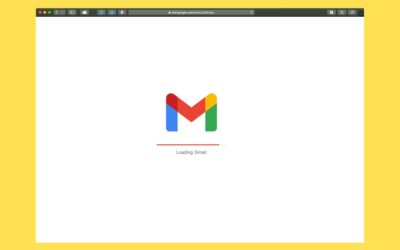SMS-iT’s ERP software is a comprehensive solution designed to streamline and optimize business processes. It integrates various functions such as finance, human resources, supply chain management, and customer relationship management into a single platform, providing real-time data and insights to help businesses make informed decisions. The software is scalable and customizable, catering to the specific needs of different industries and business sizes.
With its user-friendly interface and advanced features, SMS-iT’s ERP software is a valuable tool for improving operational efficiency and driving growth. SMS-iT’s ERP software is built on a robust architecture that ensures data security, reliability, and performance. It leverages the latest technologies such as cloud computing, artificial intelligence, and machine learning to deliver a seamless user experience and enable predictive analytics.
The software is also designed to be easily integrated with other systems and applications, allowing businesses to leverage their existing investments while gaining the benefits of a comprehensive ERP solution. With its modular design, SMS-iT’s ERP software can be deployed in phases, enabling businesses to start with the core modules and add additional functionalities as needed.
Key Takeaways
- SMS-iT’s ERP software is a comprehensive solution for enterprise resource planning, designed to streamline business processes and improve efficiency.
- The pricing structure of SMS-iT’s ERP software includes components such as licensing fees, implementation costs, and ongoing support and maintenance fees.
- The base cost of SMS-iT’s ERP software is determined by factors such as the number of users, the modules and features required, and the level of customization.
- Additional costs and fees associated with SMS-iT’s ERP software may include training, data migration, and integration with other systems.
- Factors that may impact the pricing of SMS-iT’s ERP software include the complexity of the implementation, the level of support required, and the vendor’s pricing strategy.
- When comparing SMS-iT’s ERP pricing structure with other vendors, it’s important to consider the total cost of ownership, including both upfront and ongoing expenses.
- Tips for negotiating the best deal on SMS-iT’s ERP software include understanding the vendor’s pricing model, being clear about your requirements, and leveraging competitive offers.
Components of SMS-iT’s ERP pricing structure
Core Components
The core components of the pricing structure include the software license, implementation services, ongoing support and maintenance, and any additional modules or customizations. The software license fee is a one-time cost that grants the business the right to use the software, while the implementation services cover the deployment, configuration, and training required to get the system up and running.
Ongoing Support and Customizations
Ongoing support and maintenance fees are charged on a recurring basis and cover technical assistance, software updates, and access to online resources. Additionally, fees for additional modules or customizations may be included, which are tailored to the specific needs of the business. These may include industry-specific functionalities, advanced reporting and analytics tools, or integrations with third-party applications.
Flexible Pricing Tiers
The pricing structure may also offer different tiers or editions of the software, each with varying levels of features and capabilities to cater to businesses of different sizes and complexities. This flexible approach allows businesses to choose the components that best suit their needs and budget.
Determining the base cost of SMS-iT’s ERP software

The base cost of SMS-iT’s ERP software is determined by several factors, including the number of users, the scope of functionalities required, and the deployment model. The number of users accessing the system will impact the licensing fees, as businesses will need to purchase a license for each user who will be using the software. The scope of functionalities required will also influence the base cost, as businesses may need to pay for additional modules or customizations to meet their specific needs.
The deployment model, whether on-premises or cloud-based, will also impact the base cost, as cloud-based solutions typically involve subscription fees while on-premises solutions may require upfront hardware and infrastructure investments. Businesses can work with SMS-iT’s sales representatives or partners to determine the base cost of the ERP software based on their specific requirements. They can also request a detailed quote that outlines the licensing fees, implementation services, ongoing support and maintenance costs, as well as any additional modules or customizations.
By understanding the base cost of SMS-iT’s ERP software, businesses can make informed decisions about their investment in the solution and plan for any associated expenses.
Additional costs and fees associated with SMS-iT’s ERP software
In addition to the base cost of the ERP software, there are several additional costs and fees that businesses should consider when evaluating the total cost of ownership. These may include hardware and infrastructure costs for on-premises deployments, data migration and integration expenses, training and change management costs, as well as any ongoing customization or development work. Businesses should also factor in the cost of any third-party applications or services that may be required to complement the ERP software, such as business intelligence tools, e-commerce platforms, or marketing automation solutions.
Furthermore, businesses should be aware of any potential hidden costs associated with SMS-iT’s ERP software, such as fees for exceeding user limits, data storage overages, or additional support services. It is important for businesses to thoroughly review the terms and conditions of the software license agreement to understand any potential cost implications. By considering these additional costs and fees associated with SMS-iT’s ERP software, businesses can develop a comprehensive budget and ensure they have the necessary resources in place for a successful implementation.
Factors that may impact the pricing of SMS-iT’s ERP software
Several factors may impact the pricing of SMS-iT’s ERP software, including the level of customization required, the complexity of data migration and integration, the level of support and training needed, and the scalability of the solution. Businesses with unique requirements that necessitate extensive customization or development work may incur higher costs compared to those with more standard needs. Similarly, businesses with complex data environments or multiple systems to integrate may face higher implementation costs due to the additional time and resources required.
The level of support and training needed can also impact pricing, as businesses that require more hands-on assistance or on-site training may face higher ongoing support costs. Additionally, the scalability of the solution may impact pricing, as businesses that anticipate rapid growth or fluctuating user numbers may need a more flexible pricing model to accommodate their changing needs. By understanding these factors that may impact the pricing of SMS-iT’s ERP software, businesses can work with their sales representatives or partners to develop a pricing structure that aligns with their specific requirements and budget.
Comparing SMS-iT’s ERP pricing structure with other vendors

Evaluating the Total Cost of Ownership
Businesses should consider not only the upfront costs but also ongoing expenses such as support and maintenance fees, as well as any additional modules or customizations required. They should also evaluate the scalability and flexibility of the pricing structure to ensure it can accommodate their future growth and changing needs.
Comparing Value Propositions
Furthermore, businesses should consider the value proposition offered by SMS-iT’s ERP software compared to other vendors. They should assess the features, functionalities, and industry-specific capabilities provided by each vendor to determine which solution best meets their requirements. Businesses can also leverage customer references and case studies to gain insights into the real-world performance and return on investment offered by each vendor’s ERP solution.
Making an Informed Decision
By comparing SMS-iT’s ERP pricing structure with other vendors in the market, businesses can make an informed decision about their investment in an ERP solution.
Tips for negotiating the best deal on SMS-iT’s ERP software
When negotiating the best deal on SMS-iT’s ERP software, businesses should consider several tips to maximize their investment and ensure they are getting a fair offer. Firstly, they should clearly communicate their specific requirements and budget constraints to their sales representatives or partners to ensure they receive a tailored proposal that meets their needs. They should also leverage competitive offers from other vendors to negotiate better pricing or additional value-added services from SMS-iT.
Businesses should also consider negotiating flexible payment terms or discounts for upfront payments to optimize their cash flow and reduce their total cost of ownership. Additionally, they should seek clarity on any potential hidden costs or future price increases to avoid unexpected expenses down the line. Finally, businesses should consider bundling services or modules together to achieve cost savings and streamline their implementation process.
In conclusion, understanding SMS-iT’s ERP software and its pricing structure is essential for businesses looking to invest in a comprehensive solution that can drive operational efficiency and growth. By considering the base cost, additional costs and fees, factors impacting pricing, comparing with other vendors, and negotiating tips, businesses can make informed decisions about their investment in SMS-iT’s ERP software and ensure they get the best value for their money.
If you’re interested in learning more about how SMS-iT can revolutionize your customer relations, check out this article on SMS-iT CRM system. This game-changing tool can help streamline your schedule and save you time, making it an essential addition to your business operations.
FAQs
What is SMS-iT’s ERP pricing structure?
SMS-iT’s ERP pricing structure is a system of determining the cost of their Enterprise Resource Planning (ERP) software and services. It includes factors such as the number of users, modules required, implementation and customization needs, and ongoing support and maintenance.
How is the cost of SMS-iT’s ERP software determined?
The cost of SMS-iT’s ERP software is determined based on the specific needs of the organization, including the number of users, the modules required (such as finance, HR, inventory management, etc.), and any additional customization or integration needs.
What factors can impact the pricing of SMS-iT’s ERP software?
Factors that can impact the pricing of SMS-iT’s ERP software include the size of the organization, the complexity of the business processes, the level of customization and integration required, and the level of ongoing support and maintenance needed.
Does SMS-iT offer different pricing tiers for their ERP software?
Yes, SMS-iT may offer different pricing tiers for their ERP software based on the size and needs of the organization. This may include different levels of functionality, support, and scalability options.
Are there any additional costs associated with SMS-iT’s ERP software?
In addition to the base cost of the ERP software, there may be additional costs associated with implementation, customization, training, ongoing support and maintenance, and any third-party integrations that may be required.







